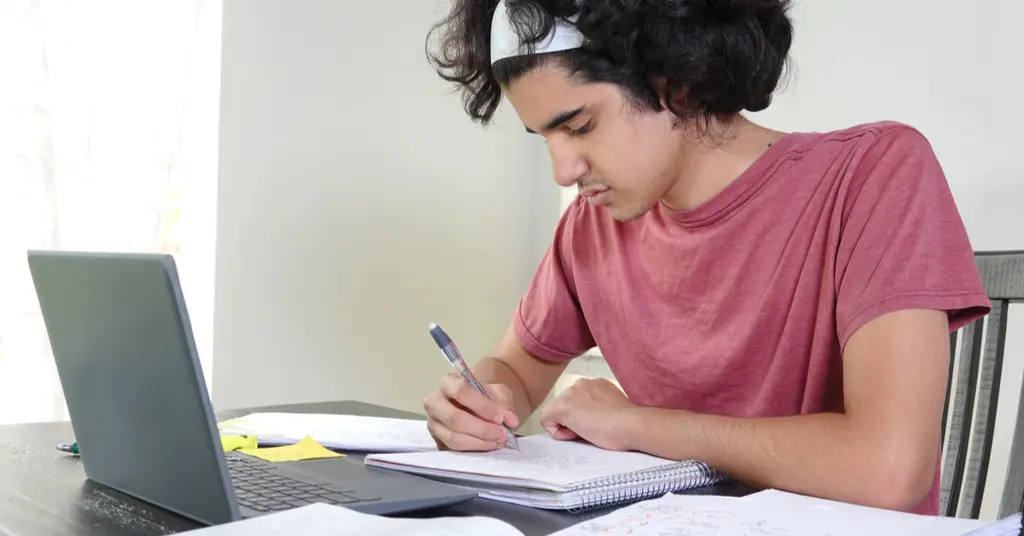Some SAT® questions are easy to make mistakes on because of their type or structure. Here is a breakdown of some difficult question types and formats. You can use this information to pinpoint questions that appear simple but may have details designed to trip you up. You can also find tips for complicated questions here.
1) Punctuation
Questions with commas, colons, and dashes are difficult if you aren’t familiar with SAT punctuation rules. To identify punctuation errors, pay attention to restrictive and non-restrictive clauses, appositives, lists, dependent clauses, modifiers, adjectives and nouns, semicolons and complete thoughts, colons and independent clauses, and dashes.
2) Sentence Flow
Some questions will point to a point in the text and ask where a numbered sentence should be placed to improve the paragraph’s flow. You will need to select the most logical location for the sentence. These can be challenging questions because each placement option could be the correct answer. There is only one that is the most logical choice. You can strategize by paying attention to what each sentence says and how information is ordered. The sequence of information is crucial to the logic of the paragraph. To make a decision, pay attention to the information that would precede and follow the given sentence in each possible location.
3) Paragraph Flow
Some questions will ask to improve the order of the paragraphs. To answer these questions, make sure to note the main idea of the paragraph in question and pay attention to the author’s motives when deciphering the logical progression of their claims. Paying attention to the chronology of information and events is a good way to navigate these questions.
4) Removing Redundant Information
Look out for information that is unnecessarily restated. Extensive lists of adjectives can indicate redundant information: multiple words that mean the same thing are repetitive and unnecessary. The SAT exam will sometimes use punctuation to fabricate the importance of redundant words. Look out for tricks like this, pay attention to each word’s meaning, and remember that the most concise answer is often the correct one.
5) Selecting Reasoning or Evidence
Sometimes the answer choices complicate quite simple questions. Answers that could be right, but have a detail off, can easily distract you from the correct choice. This is common when a question asks whether the author should include a specific piece of information. You will have to answer “yes” or “no” and choose which answer best describes why or why not. Selecting proper reasoning for your answer requires an understanding of the larger text. Read each answer choice carefully, and consider whether the reasoning behind the “yes” or “no” is specific or accurate.
6) Conjunctive Adverbs
Some questions will test your analysis of how information connects. Conjunctive adverbs are a common indicator for this type of question, so look for phrases like “however” or “moreover.” A good strategy is to cover up the conjunctive adverb and look at the information presented in the two sentences it bisects. You can make sense of information’s flow by looking at the two phrases without the distraction of the original conjunctive adverb. Look for relationships. If two sentences contradict each other, then “therefore” is not a logical conjunctive adverb: instead, “however” makes more sense.
7) Unclear Pronouns Or Antecedents
You may come across a question that presents a pronoun with an unclear antecedent. This means the noun the pronoun replaces lacks clarity. These questions are difficult because they contain errors that are hard to spot. For example, it is much more challenging to decipher whether pronouns are in agreement with their antecedent if you cannot determine the antecedent. If a pronoun’s antecedent is unclear, replace the pronoun
8) Word Choice
Word choice questions are difficult because the options are purposefully similar in meaning. When deciding if a change in word choice is necessary, start by looking at the answer choices. Note the meaning of each answer option, and make your decision based on if the definition is logical to the meaning of the sentence. Similar answer choices can be eliminated by looking at the details of the text. The difference between “childlike” and “childish” can seem minimal, but their connotations make a difference. Childlike has a more innocent connotation. Childish is more naïve or foolish in connotation. Always pay attention to the logic of the words’ meanings and surrounding contexts to find the best fit.
9) Modifiers
The phrase or clause that describes something else is called a modifier, and it has specific punctuation rules. Start by deciphering if the descriptive phrase is crucial to the meaning of the text. If the sentence is still logical without that phrase, then it should be surrounded by commas. If the sentence loses its integrity without the descriptive phrase, then it should not be surrounded by commas.
10) Noun Usage
It can be challenging to assess proper noun usage, especially when dealing with potential errors with plural nouns and plural possessives. Start by eliminating answers that mess up the meaning of the sentence. Figure out which noun is possessive, which noun is plural, or which noun is plural possessive. To decide if “ponies” should be “pony’s” or “ponies’,” your understanding of its relationship to other nouns is crucial.
11) Faulty Comparisons
Faulty comparison questions are difficult because the comparisons the SAT provides are odd and uncommon. You should know that you can only compare things of the same type, and you can’t compare something to everything. Comparisons should be specific, but watch out for redundancy when making improvements.
12) Editing Information
You will need to make corrections for redundancy in the Writing test, which will likely involve removing unnecessary information. Looking at options to combine sentences or improve conciseness can be tricky because redundant information may seem crucial. Look at the underlined information and the surrounding sentences. Use the context to decide what is necessary. You should also look at the answer choices, eliminating ones that are wordy or redundant. The goal is to edit out words that distract from the meaning of the sentence.
13) Parallel Structures
Parallel structure questions are difficult for two reasons: they assess your knowledge of proper grammar, and they rely on your understanding of verb tense. Verb tense must be consistent throughout a sentence, so both (or all) verbs should be past, present, or future tense. Here are some parallelism grammar rules to look out for: listed items should all be in the same form of either noun, gerund, or verb; phrases on either side of a conjunction should be parallel.
These complicated and difficult question types are manageable! There may be a couple of extra steps or rules to remember, but with practice and focused studying, you’re on your way to acing them. You can gain experience using UWorld’s SAT Prep Course. Our practice exams, detailed question explanations, and performance tracking tools will provide you with tools for success on test day. You can also find out more about your weak points through these resources. Try them out to practice the twelve hardest question types on the Writing section!




